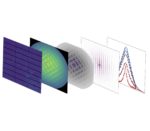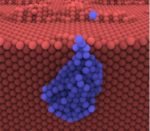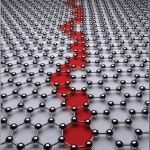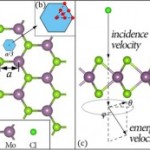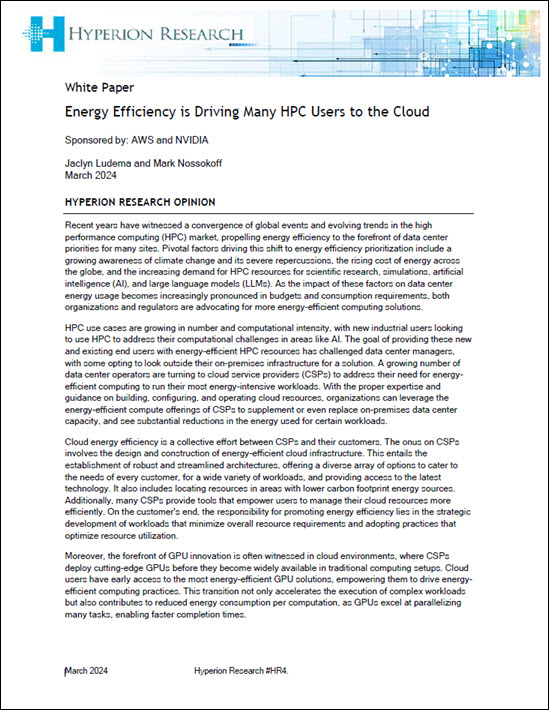In this episode of the Let’s Talk Exascale podcast, produced by DOE’s Exascale Computing Project, the topic is an ECP subproject called QMCPACK, which aims to find, predict, and control materials from first principles with predictive accuracy. This episode offers a conversation with QMCPACK’s principle investigator, Paul Kent, a distinguished R&D staff member at Oak Ridge National Laboratory. The discussion
DOE: $150M for Chemical and Materials Science to Cut Climate Impacts of Energy Technologies and Manufacturing
Feb. 22, 2022 — The U.S. Department of Energy (DOE) today announced $150 million in open funding for research projects focused on increasing efficiency and curbing carbon emissions from energy technologies and manufacturing. This funding will support research underpinning DOE’s Energy Earthshots Initiatives, which set goals for significant improvements in clean energy technology within a […]
DOE Funds Argonne for better materials and chemistry through data science
Argonne is one of five national laboratories and fourteen universities awarded three-year grants under a DOE Funding Opportunity titled “Data Science for Discovery in Chemical and Materials Sciences.” Argonne was awarded funding for two research projects. Total funding will be nearly $4.75 million over three years.
Podcast: ECP Team Achieves Huge Performance Gain on Materials Simulation Code
The Exascale Atomistics for Accuracy, Length, and Time (EXAALT) project within the US Department of Energy’s Exascale Computing Project (ECP) has made a big step forward by delivering a five-fold performance advance in addressing its fusion energy materials simulations challenge problem. “Summit is at roughly 200 petaflops, so by the time we go to the exascale, we should have another factor of five. That starts to be a transformative kind of change in our ability to do the science on these machines.”
DOE Funds $37 Million for Materials and Chemistry Research in Quantum Information Science
Today the U.S. Department of Energy (DOE) announced $37 million in funding for targeted research in materials and chemistry to advance the important emerging field of Quantum Information Science (QIS). “America was a pioneer in the establishment of the Information Age,” said Under Secretary for Science Paul Dabbar. “It’s critical that we remain in the forefront of information science and technology, and this new research will help ensure continued U.S. leadership in the information economy in the years ahead.”
Podcast: Supercomputing the Emergence of Material Behavior
In this TACC Podcast, Chemists at the University of California, San Diego describe how they used supercomputing to design a sheet of proteins that toggle between different states of porosity and density. This is a first in biomolecular design that combined experimental studies with computation done on supercomputers. “To meet these and other computational challenges, Paesani has been awarded supercomputer allocations through XSEDE, the Extreme Science and Engineering Discovery Environment, funded by the National Science Foundation.”
Designing Interfaces in Materials with Supercomputers
Designing materials atom-by-atom has long been a science fiction dream. Georg Schusteritsch and Chris Pickard of the University of Cambridge are bringing science fiction one step closer to reality using the UK National Supercomputing Facility, ARCHER to reveal the interfaces forming within and between materials. “We have developed a general first-principles approach to predict the crystal structure of interfaces in materials, a technique that represents a major step towards computationally developing materials with specially designed interfaces.”
Materials Discovery by Computation – a Revolution Still in the Making
“We will describe recent progress and successes obtained in predicting properties of matter by quantum simulations, and discuss algorithmic challenges in connection with the use of evolving high-performance computing architectures. We will also discuss open issues related to the validation of the approximate, first principles theories used in large-scale quantum simulations.”
New Algorithm for Real-Time Simulations in Materials Research
Researchers at LBNL have have developed a new algorithm that opens the door for real-time simulations in atomic-level materials research. “By eliminating higher energy terms, you significantly reduce the dimension of your problem, and you can also use a bigger time step,” explained Wang, describing the key to the algorithm’s success: Solving the equations in bigger time steps reduces the computational cost and increases the speed of the simulations.



